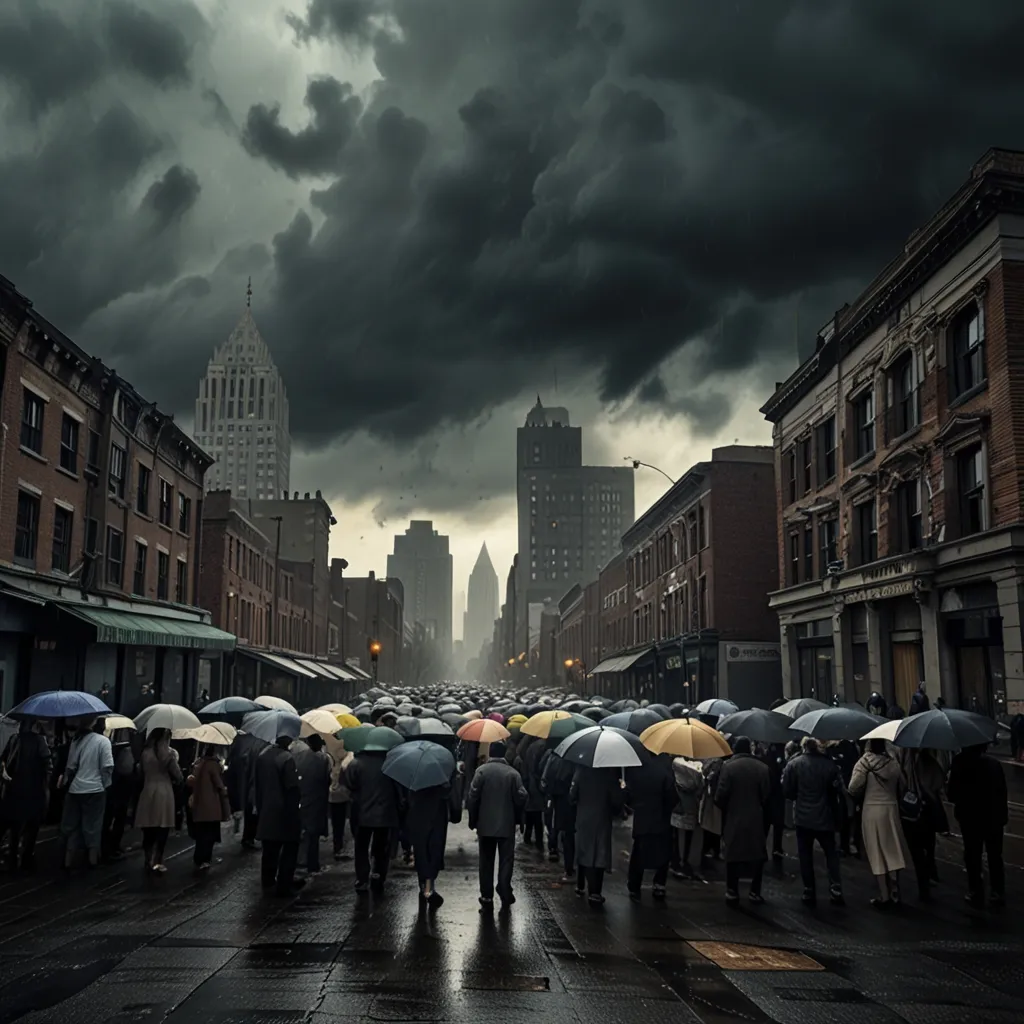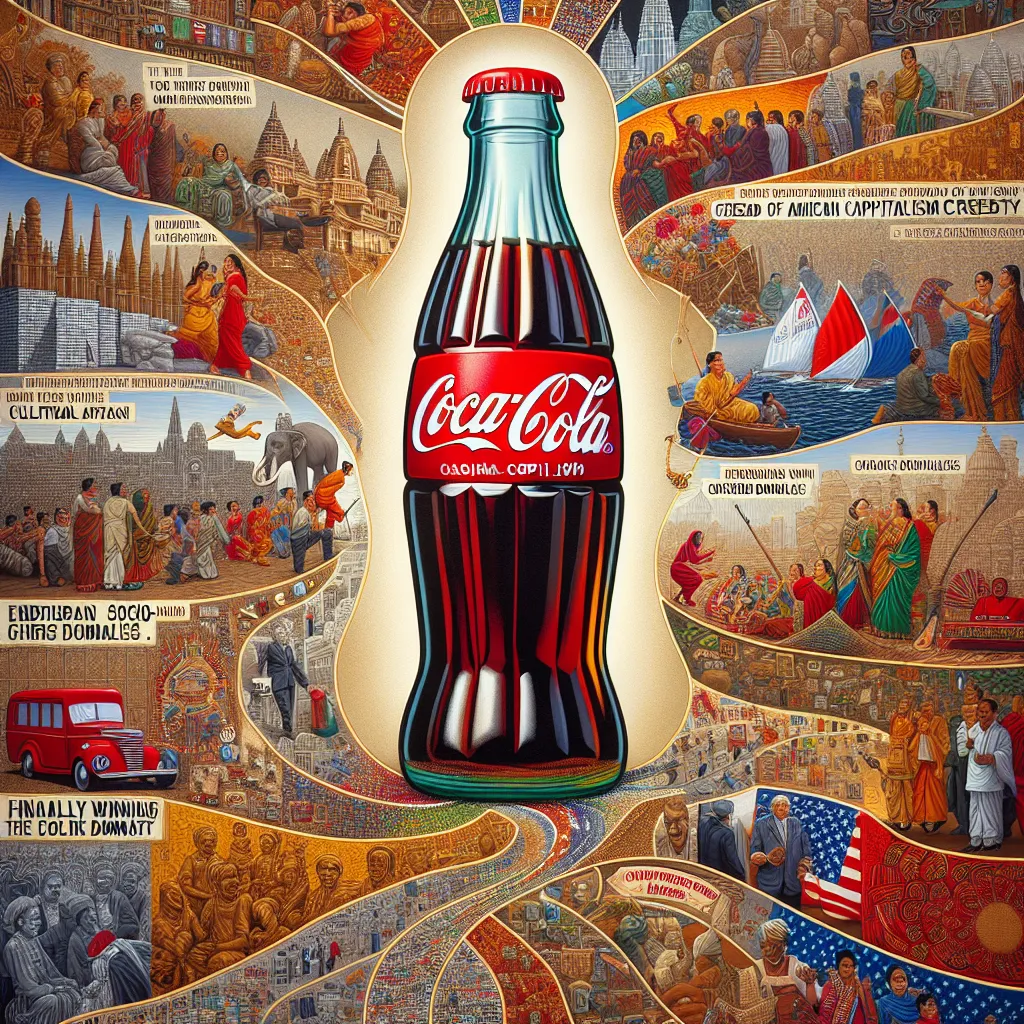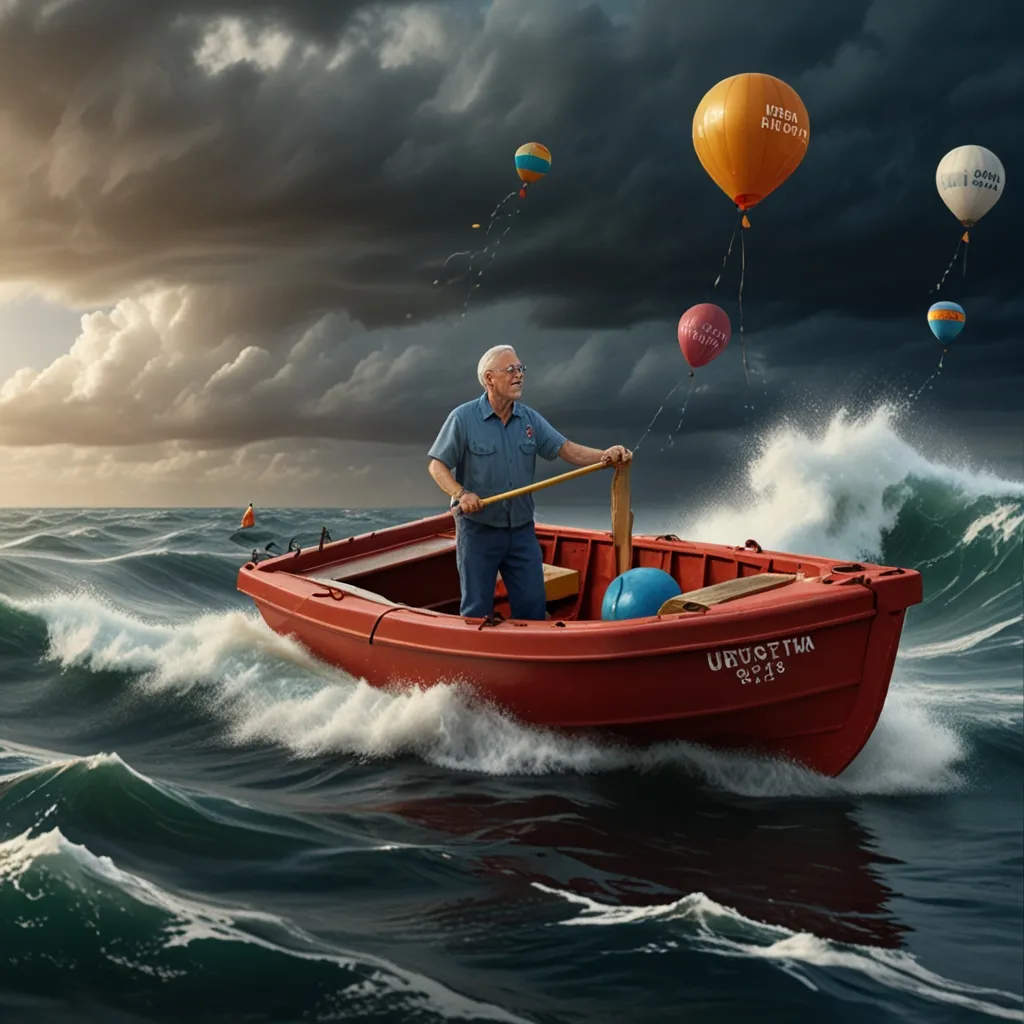Nobody saw it coming. The Great Depression caught everyone off guard, spiraling society into one of the most devastating periods in human history. Employment rates plummeted, industries folded, and banks crumbled, leading to chaos across the world. Imagine the ripple effect: families scraping by, businesses closing their doors, and entire communities drowning in unprecedented challenges. This wasn’t just any financial hiccup; it was a relentless economic nightmare that gripped the Western world harder than anything before it.
October 24, 1929—marked in history as Black Thursday—saw an unbelievable 12.9 million shares traded on the New York Stock Exchange. But just when people thought the panic might be over, Black Tuesday hit five days later. On that catastrophic day, around 16 million shares flooded the market overnight, becoming utterly worthless. Stocks bought on borrowed money vanished into thin air, wiping out countless investors. Confidence in the economy evaporated, causing people to pull back on spending and investing.
The immediate consequence was brutal. Factories and businesses, witnessing a sharp decline in spending, had no choice but to cut back production, leading to massive layoffs. Those lucky enough to keep their jobs faced reduced wages, crushing their buying power. Essentially, no one was spending money, and the economy entered a death spiral.
This wasn’t just America’s problem. Given the size and influence of the U.S. economy, the depression quickly turned global. The gold standard—an economic policy linking various currencies to fixed exchange rates—helped spread the disaster, particularly through Europe. As the U.S. economy faltered, shockwaves jolted economies worldwide.
With stock prices collapsing, businesses failing, and banks teetering on the edge, people rushed to withdraw their money. It made sense—people wanted to protect their assets. But this run on banks was catastrophic. Investors doubted the stability of their banks, compelling banks to liquidate loans and assets to boost cash reserves. Lending dried up, further exacerbating the economic nightmare.
As if things couldn’t get worse, the U.S. Federal Reserve’s response is often criticized for worsening the situation. To maintain the gold standard, it dramatically reduced the American money supply, which some argue deepened the depression. However, expanding the money supply might’ve sparked doubts among foreign investors about the U.S.’s commitment to the gold standard, causing large gold outflows and currency devaluation. It was a lose-lose situation.
Let’s not forget the global impact. Different countries experienced the depression in varying degrees. Great Britain, for instance, saw a more modest economic decline compared to the U.S. France initially weathered the storm better but suffered later. Germany faced dire straits; heavily reliant on U.S. loans for reparation payments, it plunged into another deep economic crisis. Their government, wary of reigniting the hyperinflation of the early ’20s, hesitated to adopt policies that could have soothed the economic pain.
Conversely, less industrialized countries fared better. Argentina and Brazil didn’t suffer as severely, while Japan’s depression was milder and shorter. British India experienced mixed impacts: peasants and craftsmen faced poverty due to falling demand, but landowners, urban workers, and officials saw an increase in purchasing power thanks to declining prices.
In stark contrast, the USSR thrived. The Soviet Union’s command economy shielded it from international economic woes, enabling rapid industrial growth. However, this didn’t mean prosperity for the average Russian worker, who saw wages significantly reduced so funds could be pumped into colossal projects.
The Great Depression wasn’t just an economic calamity; its social impact was profound too. Women’s employment rose sharply in the U.S., driven by necessity as male breadwinners lost jobs or couldn’t earn enough. This era also saw a surge in single women seeking work, due to plummeting marriage rates as people couldn’t afford to start families.
In the U.S., even with these shifts, most jobs offered to women were low-paying and service-related, such as nursing, teaching, and domestic work. Despite their meager pay, these jobs provided crucial lifelines for families.
Under these dire conditions, the U.S. went against its traditional reluctance to centralize government power in response to the depression. Desperation forced greater governmental intervention. Fear and trauma from the Great Depression led to new policies and significant societal changes. Bread lines, shuttered factories, and widespread poverty became the norm, cultivating a sense of hopelessness that fueled social unrest. Youths left home searching for work, marriages were delayed, and birth rates dropped dramatically.
Remarkably, the Great Depression also nudged society towards modern economic practices. The international gold standard ended, leading to the Bretton Woods system, which introduced fixed exchange rates but lacked the earlier commitment. Labor unions grew stronger, unemployment compensation took root, and social safety nets expanded significantly.
This era’s economic turbulence also transformed cultural landscapes. Art reflected realism rather than the optimism of the ’20s, and journalism boomed. Authors and artists shifted their focus to documenting real-life struggles, supported by initiatives like President Roosevelt’s New Deal, which believed that sustaining artists was as crucial as other workers.
Popular culture also changed, embracing simplicity and thrift. The lavishness of the ’20s gave way to practicality. This all stemmed from a shift in mentality—accepting limitations and making the best of what was available, resonating through every facet of life.
Geopolitically, the depression shifted power dynamics. European elites fled to the U.S., transforming it into a cultural and political hub. American politics and economy grew in influence, reflected in substantial gold inflows from Europe that bolstered its financial stability.
The Soviet Union, untouched by the depression, continued to grow, becoming a model many sought to emulate. They gained significant influence, positioning themselves as a global power.
Thinking about the Great Depression today raises a haunting question: Could it happen again? Parallels can be seen in our current world—rising homelessness, low-paying jobs, and cultural shifts. However, while some symptoms seem eerily familiar, we aren’t quite reliving the Great Depression. Yet, it’s crucial to reflect on those agonizing years to understand how economies crumble and how fragile our stability often is. By learning from the past, we can better navigate the future, ensuring we don’t make the same mistakes.






